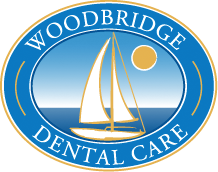If you haven’t been brushing, flossing, or getting your teeth professionally cleaned, you may have gingivitis, a mild form of gum disease. The good news is that gingivitis can be reversed with proper oral hygiene practices and a little help from our dental team.
What is Gingivitis?
Gingivitis is the first stage of periodontal (gum) disease. There are several symptoms, including red, swollen, and tender gums; sensitivity to heat or cold; gums that bleed easily; and lingering bad breath. Untreated gum disease can progress to periodontitis, which is the leading cause of tooth loss in adults.
Who gets gingivitis?
Gingivitis is very common. Over half of all adults over the age of 30 suffer from some form of gum disease.
There are several factors that increase the risk of gum disease:
- males, though researchers are unsure of the reason for this. There may be a hormonal component to this, or that men are more likely to contract related diseases. In addition, men are less likely to go to the dentist.
- poverty-stricken individuals and those with less than a high school education. A number of diseases are associated with these factors.
- smokers, since tobacco weakens the body’s ability to resist infection.
Gingivitis: What Causes It?
Plaque and tartar can accumulate on the teeth without good oral hygiene practices and regular dental cleanings. Bacteria in plaque irritate gum tissues, causing inflammation and infection.
Other risk factors for gingivitis include having crooked teeth that are hard to clean; smoking or chewing tobacco; hormonal changes during pregnancy; and dry mouth. Gum inflammation can also be a side effect of certain medications and be caused by certain medical conditions, including diabetes.
How Is Gingivitis Treated?
A deep cleaning procedure called scaling and root planing is the first line of treatment for gingivitis and periodontitis. The process of scaling is similar to that of a routine dental cleaning. Scalers are used to remove plaque and tartar from below the gum line and in between teeth. Root planing involves cleaning and smoothing out the tooth’s root surfaces to encourage the gum tissue to heal.
A gingivitis treatment plan should also include maintaining daily oral hygiene habits, such as brushing your teeth, flossing, and rinsing your mouth with mouthwash. Please schedule an appointment with our dental office as soon as possible if you notice any signs of gingivitis. Our team will evaluate your condition and assist you in restoring your healthy smile.
We invite you to schedule your routine dental examination and cleaning with our dental office. We provide preventive services to ensure your smile remains healthy for as long as possible. You can always count on our team for the highest level of care and service. Get in touch with us today to schedule an appointment!








